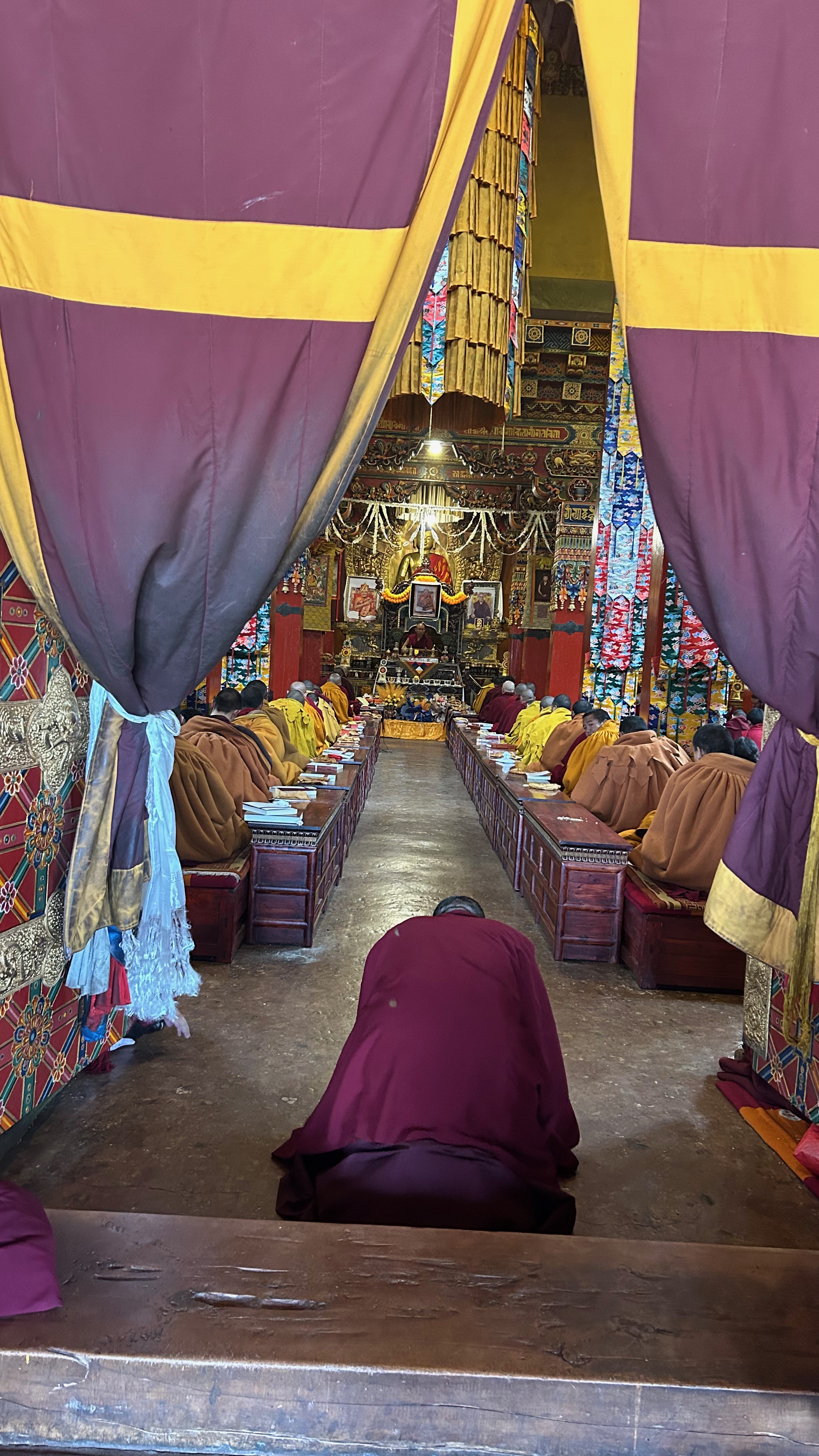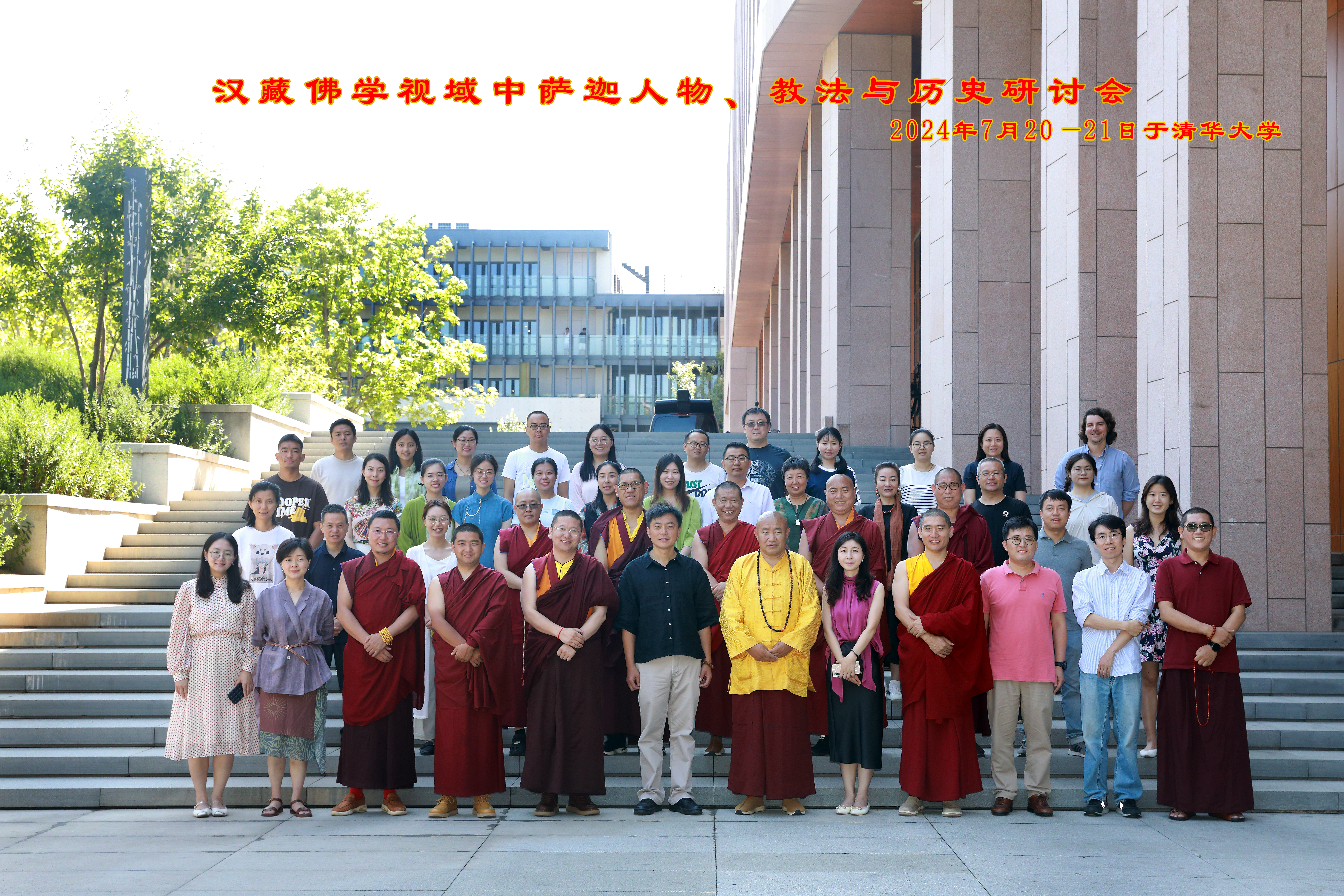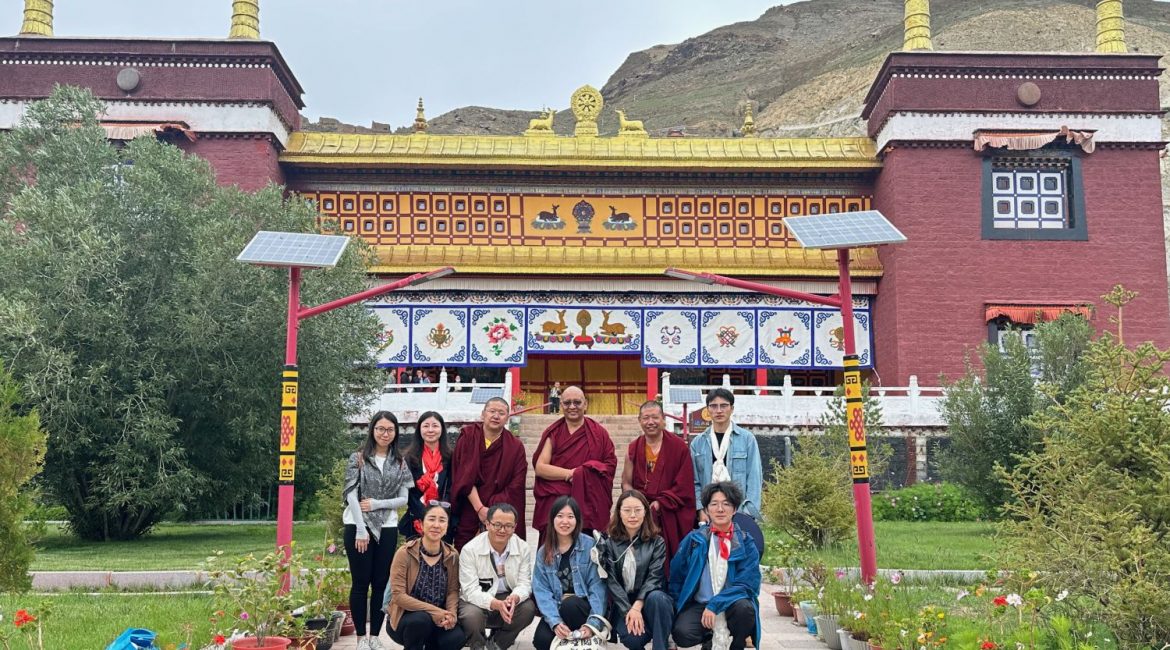For the past three years, the Center for Sino-Tibetan Buddhist Studies at the School of Humanities, Tsinghua University and Phagspa Charitable Foundation (based in Chifeng, Inner Mongolia) have been collaborating on a landmark project to translate Tibetan Lamdre literature into Chinese. The project’s fruit comprise five Chinese-Tibetan bilingual academic books, are set to be published later this year by China Tibetology Publishing House (中國藏學出版社). Scholars from Tsinghua University, Renmin University of China, and Nanjing University were invited to conduct related research and write introductions for each book. The titles include:
The Master’s Explanation of Lam-’bras (Tib. Lam-’bras-slob-bshad, Chin.道果弟子釋),
The Assembled Explanation of Lam-’bras (Tib. Lam-’bras-tshogs-bshad, Chin.道果大眾釋),
The Appended Texts of Lam-’bras (Tib. Lam-’bras-zur-bkod, Chin.道果增補文獻輯錄),
The Seven Points of Mind Training (Tib. Blo-sbyong-don-bdun-ma, Chin.修心七要), and:
The Vajrayogini Teachings of Nāropa (Tib. Nāro-mkha’-spyod-skod, Chin.那若空行文獻輯錄).
From July 20-22, 2024, the Center for Sino-Tibetan Buddhist Studies at the School of Humanities, Tsinghua University, organized a conference called, “Sakya Figures, Teachings, and History from the Perspective of Sino-Tibetan Buddhist Studies.” I spoke to Dr. Shella Shen (postdoctoral fellow at Department of Chinese History and Culture, The Hong Kong Polytechnic University), who was invited to attend. “One of my ongoing research projects focuses on the Sino-Tibetan textual and imagery comparison of the uṣṇīṣavijayā maṇḍala from the 10th to 14th centuries. As is well known, the Sakya sect has maintained a highly significant and orthodox lineage of uṣṇīṣavijayā practice,” she said.
與康寧寺堪布.jpg)
This seminar not only brought together renowned researchers working on Sakya studies, but also invited khenpos and masters from the Sakya school to present academic reports (His Holiness the Sakya Trizin sent an English translator to attend). The aim was to bridge academia and religion by jointly discussing the key figures, teachings, and history of the Sakya sect within the context of Sino-Tibetan Buddhism. “The goal is to advance the development of Buddhist studies by fostering collaboration and communication from diverse perspectives, methodologies, and viewpoints.” One of the translators, ’Jam-dbyangs-sgrol-ma (a Sakya nun from Gwa-gu Bodhi Grove Meditation Center of Dzongsar Monastery), introduced the latest research outcomes on the Sakya lamdre (Tib. lam-’bras, The Paths and Fruits) literature.
At the conference, the Sakya panditas presented their insights and research on topics such as: “On Sakya Pandita and the Pañca-Vidyās,” “On the Main Transmission Lineages of the Lamdre Teachings,” and “A Brief History of the Lamdre Teachings.” Each presenter delivered their talk in either Mandarin Chinese or Tibetan.
“For me, the last similar event dates back a decade, to a cross-cultural discussion on ‘Science and Buddhism’ between Prof. Zhu Qingshi, an academician of the China Academy of Sciences, and ’Jam-dbyangs-blo-gros Rinpoche from the Jonang-pa, held at my alma mater, Renmin University of China,” Shella told me. “This seminar at Tsinghua University provided a rare and valuable opportunity for both academic and religious communities to share new findings and insights into Sino-Tibetan Buddhist Studies at the most prestigious university in mainland China.”
Shella continued, “During the research trip, we also visited several esteemed Sakya panditas who were conducting the summer gathering (Tib. dbyar-gnas) in Shigatse. For example, we met Ngor-mKhan Rinpoche Thub-bstan-snying-po from Ngor Monastery (one of the three divisions of the Sakya sect). We were fortunate to attend the final day of the summer gathering at Sakya Monastery, where we had the opportunity to engage with the Khenpo of Sakya Monastery and Sakya Buddhist Academy, the 47th Lha-khang-mkhan-chen mThu-stobs-seng-ge. He graduated from Dzongsar Buddhist Academy in Dege County, Garze, Sichuan, and obtained the mtho-rab-pa degree (the highest degree in Tibetan Buddhism) at the High-level Tibetan Buddhism College of China. Knowing that I am from The Hong Kong Polytechnic University, Khenpo mThu-stobs-seng-ge was pleased to share that he had also visited PolyU and HKU, as well as Taiwan.”

“Subsequently, I discussed my recent article ‘Maṇḍala or Sign? Re-Examining the Significance of the “Viśvavajra” in the Caisson Ceilings of Dunhuang Mogao Caves,’ published by Religions in July, with Khenpo Yon-tan-mgon-po from the Sakya Monastery Branch of the Tibet Buddhist Academy. He supported my conclusions and remarked, ‘One traditional use of the viśvavajra sign was in ceilings, and we continue to create homa maṇḍalas in this manner, following the relevant tantras.’”
Translators
Prof. Weirong Shen is the chair of this conference. He received his BA and MA in History Studies from Nanjing University. In 1998, he got his PhD in Language and Cultural Studies of Central Asia from Bonn University. Between 1998 and 2005, he carried out teaching and research at various international Institutions, such as Lumbini International Research Institute, Harvard University, Macalester College, Humboldt University of Berlin, and Kyoto University. In 2006, he joined the School of Chinese Classics of Renmin University of China as a professor and founded the Tibetan and Buddhist History Research Institute and Sino-Tibetan Buddhist Studies Center. Since 2015, he has also been Professor of Chinese Language and Literature at Tsinghua University, leading the Chinese Minority Language and Literature Studies.
Weirong Shen’s areas of specialization include Chinese ancient history, especially Yuan Dynasty and Tibetan history, and the religious history of Tibetans, Mongols, Tanguts, Uygurs, and Han Chinese from the 11th to 15th centuries.

Shella had initially planned a research trip to Beijing and Tibet before receiving the invitation to the Sakya seminar. “In addition to my research on the Sakya-pa, I have recently begun a new project focusing on the modernization of Tibet from the 1930s to the 1950s. I hope to have the opportunity to visit Lhasa and the Sakya monasteries in Shigatse again.”
In a pleasant coincidence, Shella learned during the conference that Khenpo Kun-dga’-bstan-’dzin from Kangning Monastery, a Sakya monastery in Inner Mongolia, will lead a group of professors and students from Tsinghua and Renmin Universities to investigate Tibet following the conference. The trip will aim to visit important monasteries that have significantly influenced Sino-Tibetan exchanges throughout history, or have had interactions with the Sakya school over the past millennium. The primary objectives are to examine relics in these monasteries, including architecture, murals, sculptures, and original manuscripts. “Field research is a crucial method in Buddhist Studies, as it preserves and restores the historical and environmental context that cannot be fully captured by texts or images alone,” she said.
“The Sakya school played a crucial role in Sino-Tibetan interactions, exchanges, and integration. Ancient panditas, such as Sakya Pandita (1182–1251) and ’Phags-pa (1235–80), took great lengths to facilitate these exchanges, overcoming prejudices in Sino-Tibetan Buddhism,” said Shella. “There were critical events like the Liangzhou Alliance and the establishment of the Imperial Preceptor system. The Four Great Temples of Wuwei, over 700 monasteries across China, and the relay stations that operated for over 700 years, all mark the dissemination of teachings and mark significant achievements in the integration of civilizations.”
Shella said that the Sakya literature research project serves as a starting point for studying the historical development of Sino-Tibetan Buddhism. The fruits of the achievements are not only a realization of “spiritual civilization,” and a collaboration between Tsinghua University and Kangning Monastery that has lasted over five years. This exemplifies a modern model for collaboration between academic institutions and religious groups. This innovative and bold approach has already had a significant impact, benefiting both academia and society.
See more
Dzongsar Academy
调查研究 | 法脉绵延·雕版千秋:2024年暑期主题调研报告(三)(Chinese only)


